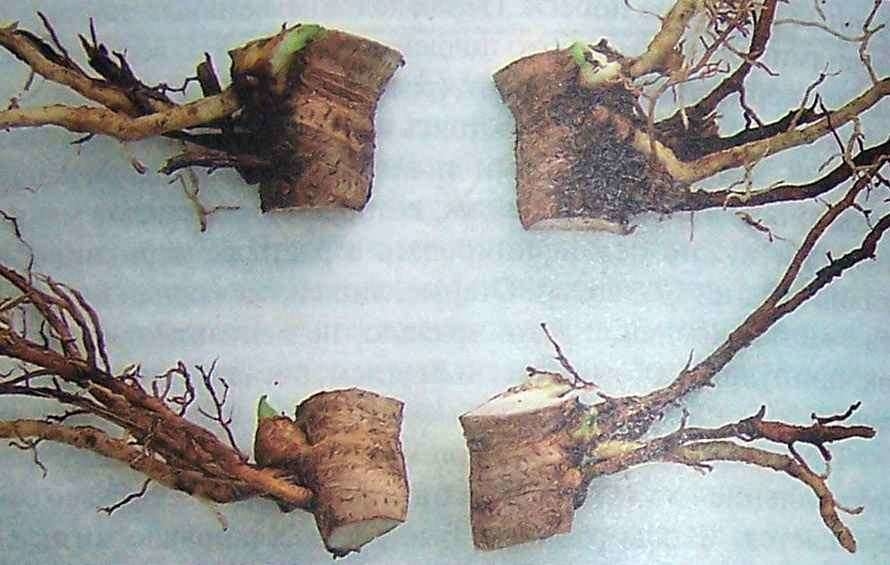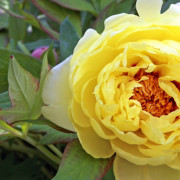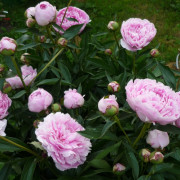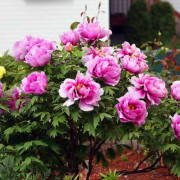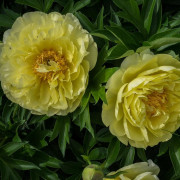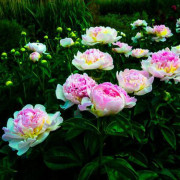Festival Maxima peony (Paeonia Festiva Maxima)
Content:
Recently, many different flowers can be seen on personal plots with the onset of spring. But peonies are especially popular. They managed to win the hearts of gardeners due to their beauty and ease of growing.
Festival Maxima peony (Paeonia Festiva Maxima) - what is this variety
The Festival Maxim variety is one of the brightest representatives of peonies. It was bred by breeders at the beginning of the 19th century. The herbaceous culture is a perennial, which is characterized by the dropping of shoots at the onset of the first frost. Peony Festival belongs to the milky-flowered group, due to the characteristic color of the peduncles.
The plant has a spreading bush, reaching a height of 1.5 meters. The stem is covered with wide leaves, dark green in color. With the help of the leaves, the plant manages to maintain its decorative properties even after the flowering period. The peony's shoots are strong, so the bush does not need a garter during flowering.
The description says that the peduncle of the peony ends in a double inflorescence, more than 20 cm in diameter, milky in color. In the middle of the flower, there are red specks at the tips of the double petals. The buds on the bush can last for 2-3 weeks, after which they crumble.
Positive characteristics include the following:
- A perennial plant does not require frequent replanting. A peony can grow in one place for over 20 years.
- An adult bush can withstand temperatures as low as -40 degrees, so it does not need shelter for the winter.
- Rarely exposed to diseases and attacked by pests.
Huge and lush bushes have become widely used in landscape design. Peonies are planted both in group and single plantings, used to decorate flower beds. They are also combined with other perennials and are suitable for creating borders.
Peony Festiva Maxima is perfect for cutting buds that will decorate the interior of the house. And also fill it with aroma.
Peony Festival is a sun-loving plant. But light partial shade will not prevent him from releasing inflorescences. On the contrary, it will keep the bush from exposure to direct sunlight.
Growing a flower, how to plant it in open ground
Before you start planting any herbaceous plant, including the peony of the Festival Maxim, you must choose a suitable place and planting material. The best place will be illuminated areas with loose and nutritious soil. It is undesirable to plant a peony in the shade or in a draft, this can lead to the death of the bush.
It is better to start the procedure for transplanting or planting a perennial plant at the end of August, or the first decade of September. So that the bush has time to get stronger and take root before the onset of frost.
The herbaceous bush propagates by seeds or root cuttings. Seed propagation is used for wild species.
How to plant a peony with root cuttings:
- First, the marking of the site is done. It is necessary to take into account the size of the future bush, keeping the distance between the peonies up to 1 meter.
- Depending on the size, they dig a hole with a depth of at least 0.5 m.
- Drainage is organized at the bottom of the pit. For this, expanded clay, gravel are suitable. Compost and sand are poured on top of the drain.
- A seedling is placed in a prepared hole so that its buds go 3-5 cm below the ground.
- Next, you should cover the cutting with loose soil, carefully tamping it.
- After planting, the peony is watered abundantly with warm water. At the same time, adding a layer of soil so that there is no void between the roots.
Plant care
Peony is not a demanding plant. It is enough to carry out the main agrotechnical measures in a timely manner:
- watering:
- loosening;
- weeding;
- top dressing;
- mulching.
Watering is carried out as the soil dries up. The first time the bush is watered with plenty of water in the spring, when the buds bloom. Further during flowering. And the last watering in autumn, after flowering. During this period, the laying of the growth of the kidneys occurs.
The main stage will be the weeding and loosening of the plant. Weeding should take place as the grass germinates. Loosening is best done in the summer after watering. This will help remove excess moisture. In the spring and autumn, it is better not to loosen it so as not to damage the buds of the plant.
Peonies do not need organic fertilizers. But mineral fertilizers must be applied three times during the growing season:
- spring, when the kidneys swell;
- during bud formation;
- in the fall, when the bush lays buds for the winter.
The best minerals are nitrogen, potassium, superphosphate. They are available in special store complexes.
Peony Blossom Festival Maxim
The peony begins to bloom in the 3rd year of its life. But the buds may appear in the first season. It is better to remove them so that the plant gains strength. Flowering begins in early June and lasts almost until the end of July. The duration of the process depends on the growing conditions and care that is provided to the bush.
There are often situations when peonies do not bloom. There are many reasons for this:
- wrong choice of landing site;
- frequent plant transplant;
- improper planting of the bush;
- insufficient amount of minerals;
- unsuitable soil;
- lack or excess of moisture;
- the development of bush diseases or pests.
If possible reasons are not allowed during the cultivation of peonies, the bush will delight its owner with beauty and fragrance.
Peonies after flowering
In the fall, the peony is prepared for winter. All shoots and leaves are cut off from it, after they dry up. Cutting should be carried out so that 2 leaves remain on each branch. Dried inflorescences will inform about the end of flowering period.
In the autumn, it is important to feed the bushes with fertilizers. They are introduced into the grooves formed next to the bush so that they do not fall under the root and do not burn it.
Another main task in the autumn is transplanting. If the bush is large, it can be transplanted in the fall, this is the most favorable time.
The bush does not need shelter for a dormant period. For winter, the area around the roots is lightly sprinkled with peat or dry pine needles.
Diseases, pests and ways to control them
The unique variety of peonies is disease resistant. If improper care is taken, a herbaceous plant can be subject to various diseases. You should know the most common ones:
- Gray rot. It is formed with high humidity, soil acidity, and an excess of applied fertilizers. If a disease is detected, the affected areas are removed from the plant and the bush is treated with fungicides.
- Root rot. It is observed with an excess of moisture or stagnation of water near the bush. If a disease is detected, it is necessary to transplant the peony bush, removing the rotten parts of the root. Further treat with systemic fungicides.
- Rust.Appears as a spot on the leaves of the plant. The affected leaves should be removed, sprayed with chemicals. For preventive purposes, all dried and affected parts of the bush are burned in the autumn.
- Nematodes. Small worms that form on the roots. When digging a bush and detecting parasites, it is necessary to treat the planting material with fungicides. The main signal for the appearance of nematodes is the lag in the development of the peony.
- Ants. Appear during bud set. To get rid of them, it is enough to spray the bush with Fufanol solution.
Peony Festival Maxim has managed to establish itself as a plant resistant to various diseases and severe frosts. The perennial is famous among gardeners, has gained popularity due to its large and double inflorescences. It is also known for ease of maintenance and is widely used in landscape design.

